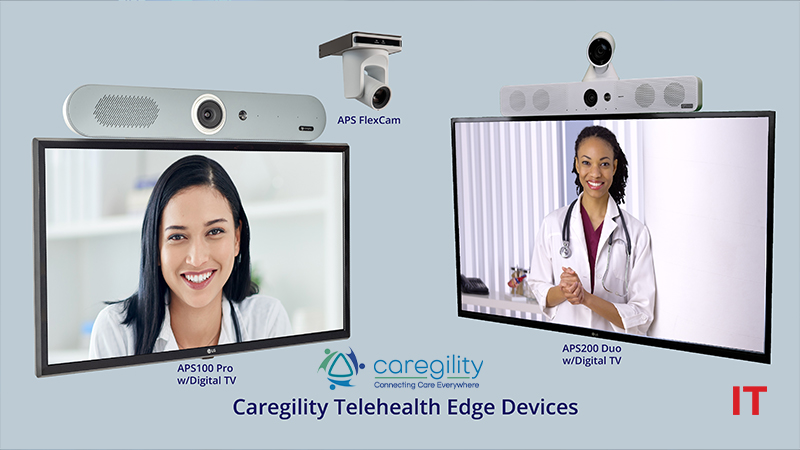In a significant leap forward for inpatient care, Caregility is proud to introduce a new class of adaptive telehealth edge devices designed to seamlessly support hybrid care models that bring remote clinicians and artificial intelligence (AI) capabilities into bedside workflows at the point of care.
The groundbreaking APS200 Duo is the company’s first dual-camera, all-in-one system with onboard edge computing and a powerful dedicated graphics engine. The APS200 Duo includes a wide-angle camera for remote patient observation and a high-definition 40x power zoom camera for virtual nursing programs and remote patient examinations.
The second-generation APS100 Pro is a reimagined all-in-one system with a wide-angle camera for remote patient observation. The versatile APS100 Pro can be expanded with the APS FlexCam, an external high-definition 40x power zoom video camera for virtual nursing programs and remote patient examinations. The APS100 Pro and APS FlexCam feature flexible wiring options, including Power-Over-Ethernet (PoE+) support.
Also Read: Telehealth Physician’s Group Claims Education Boosted IDD Patient Outcomes During COVID-19
These advanced telehealth edge devices, specifically built for inpatient settings, not only offer superior audio and video capabilities but also open new avenues for hybrid healthcare delivery, offsetting clinical staffing shortages and enhancing patient monitoring with AI-driven insights. The devices integrate with the award-winning Caregility Cloud™ virtual care platform to enable a multitude of clinical applications. Multiple audio and video streams from each telehealth endpoint can support concurrent clinical workflows such as continuous remote patient observation and ad hoc specialty consultations.
The AI-enhanced telehealth edge devices facilitate seamless virtual clinical interactions, enhancing the efficiency and quality of patient care and clinical team collaboration. The dual-camera configurations allow for virtual encounters and AI-supported continuous patient monitoring to be conducted in tandem, helping healthcare professionals detect and alert staff to unattended patient movement and vital sign changes that could lead to adverse events so care teams can intervene faster. Advanced microphone arrays and high-quality speakers provide realistic encounters and support acoustic listening AI applications such as ambient documentation for automated, structured EMR reports.
SOURCE: Businesswire
































